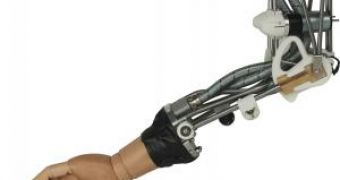A new bionic robot arm, built to operate in extreme environments or in repetitive operations, was inspired by the extremely agile elephant trunk and is able to perform extremely delicate operations, without any risk of harming a human being, by completely eliminating the possibility of uncontrolled movements.
The trunk of the elephant is so specialized in performing various tasks that it has become the elephant's most important and versatile appendage. With 40,000 muscles and one or two finger-like projections at the tip, it's so sensitive that it can pick up a single blade of grass, but also strong enough to pull tree trunks out of the soil.
Called ISELLA, the robotic arm designed by researchers at the Fraunhofer Institute for Manufacturing Engineering and Automation IPA in Stuttgart, used the elephant's trunk as an inspiration. "Its suppleness and agility gave us the idea for a bionic robot arm, ISELLA," explains Harald Staab, the inventor of the technology.
It's a fully integrated prosthetic arm that can be controlled naturally, having two motors to drive each articulated joint, so that, even if by accident, one motor control should fail, the second takes over to prevent uncontrolled movements.
"Unlike pneumatic or hydraulic actuation systems, our robot arm has a simple, low-cost muscle, consisting of a small electric motor with a drive shaft and a cord," explains Staab.
The cord was used to attach moving parts, much like tendons attach one muscle to another in the human hand and a drive shaft is linked to the midpoint of that cord, so when it turns, it makes the cord wrap around it in both direction, forming a kind of double helix, in what the researchers have named the DOHELIX.
It consists in ten muscles, a flexor and an extensor for each joint, four of them being located in the elbow and six in the upper arm, making it as flexible as a human arm.
"The shaft is no thicker than the cord, but is strong enough to resist breaking. Consequently, it has a higher transmission ratio than a conventional geared motor," said Staab, a feat that has been achieved by using elastic materials with a very high tear strength.
These materials make the DOHELIX far more efficient in terms of energy consumption that any gears system, while reducing the overall cost. With a tensile force many times greater than the actual weight of the material, the new drive system could find practical applications in many fields, from powerful automated cranes for lifting heavy containers to micrometer-scale muscles.

 14 DAY TRIAL //
14 DAY TRIAL //